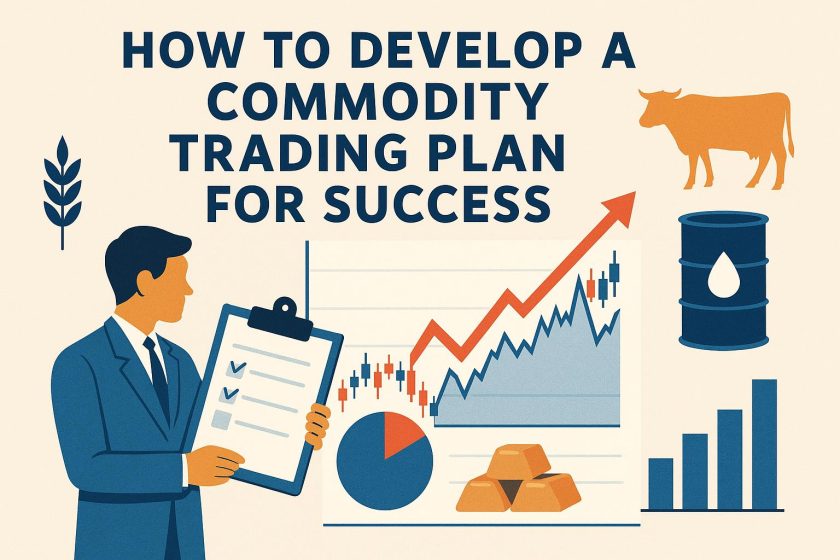How to Develop a Commodity Trading Plan for Success
By : Admin -

Understanding the Basics of Commodity Trading
Commodity trading, an intriguing segment of the financial markets, revolves around the buying and selling of tangible, essential goods such as oil, gold, and various agricultural products. Unlike investing in the stock market, where the focus lies on shares of companies, commodity trading is grounded in the exchange of physical goods that play an integral role in the functioning of the global economy.
Defining Your Objectives
The cornerstone of a successful venture into commodity trading is the establishment of clear, well-defined objectives. Prior to engaging in the market, potential traders must introspect to determine their chief aim. Some might be drawn to commodity trading as a means of pursuing long-term investment objectives, others might be inclined towards short-term profit extraction, while a significant number might seek to hedge an existing portfolio against inflation or unfavorable market conditions. This initial step of defining objectives is not a one-time exercise. Instead, it requires periodic evaluation to ensure that the trading strategies devised are in synchrony with not only prevailing market conditions but also evolving personal financial circumstances.
Analyzing Market Conditions
For crafting an effective trading plan, an astute understanding of current market conditions is paramount. This involves extensive research into a wide range of global economic indicators that could influence commodity prices. Such dynamics are often swayed by an array of factors including, but not limited to, geopolitical tensions that may affect supply routes, natural disasters that could disrupt production, and economic policies enacted by governments which might alter demand or supply landscapes. Being abreast of these factors aids traders in anticipating market movements and tailoring their strategies accordingly.
Selecting the Right Commodities
The selection of commodities for trading should align closely with the trader’s objectives and their risk tolerance levels. Each commodity comes with its own set of characteristics, including volatility, liquidity, and specific trading hours. For instance, some commodities might exhibit sharp price fluctuations, while others might trade in more stable patterns. Liquidity is crucial as it impacts a trader’s ability to enter and exit positions smoothly, thus influencing transaction costs. Furthermore, diversifying investments across a spectrum of different commodities could serve as a buffer against risks, providing a balanced portfolio that can withstand various market scenarios.
Risk Management Strategies
A critical component of every trading plan is the incorporation of robust risk management strategies. Simple yet effective tools like stop-loss orders can be employed to cap potential losses by automatically closing a position when a commodity reaches a specified price threshold. Another strategy, position sizing, entails adjusting the amount invested in a particular trade based on the trader’s overall portfolio size and risk tolerance, thus safeguarding against oversized exposure to single trades. Additionally, grasping the concept of leverage, which involves using borrowed capital for trading, is pivotal in understanding its implications on the trading account and avoiding excessive risks. By adeptly managing risks, traders can nurture a resilient trading portfolio capable of surviving market downturns.
Implementing Technical and Fundamental Analysis
An astute trader leverages a combination of technical and fundamental analysis to inform their trading decisions. Fundamental analysis is a broader approach that examines economic indicators, industry reports, and pivotal news items impacting commodity prices. Conversely, technical analysis zeroes in on the examination of price movements and chart patterns over various time frames to discern market trends and trading signals. This duality of analysis offers a comprehensive view of the market, equipping traders to make well-rounded trading decisions.
Creating a Trading Schedule
In the realm of trading, consistency emerges as a cardinal principle. Establishing a structured trading schedule tailored to the operational timelines of the relevant commodity markets can be greatly advantageous. Trading during hours of high market activity can offer optimal liquidity and narrower spreads, facilitating better trading conditions. Conversely, trading during periods marked by low liquidity can lead to slippage, resulting in orders being filled at prices divergent from the originally intended ones, thereby incurring higher transaction costs.
Continual Evaluation and Adaptation
The domain of commodity trading demands a commitment to continuous evaluation and adaptation. This involves regular assessments of the trading plan’s efficacy, accompanied by necessary adjustments to strategies. Keeping meticulous records of trading results, and delving into analysis to comprehend the underpinnings of both successful and unsuccessful trades, forms the backbone of a successful trading journey. It is through this iterative process of review and refinement that traders can adapt to the constantly evolving market conditions.
For further deepening of insights into commodity trading, engaging with financial and trading platforms that offer educational resources and comprehensive market analyses, such as Investopedia or Bloomberg Markets, is highly recommended. These platforms can serve as valuable repositories of knowledge for both novice and seasoned traders alike, fostering a deeper understanding of market dynamics and trading techniques.
This article was last updated on: October 9, 2025